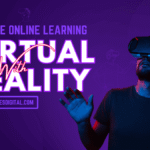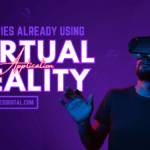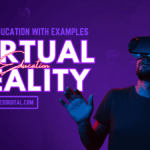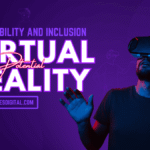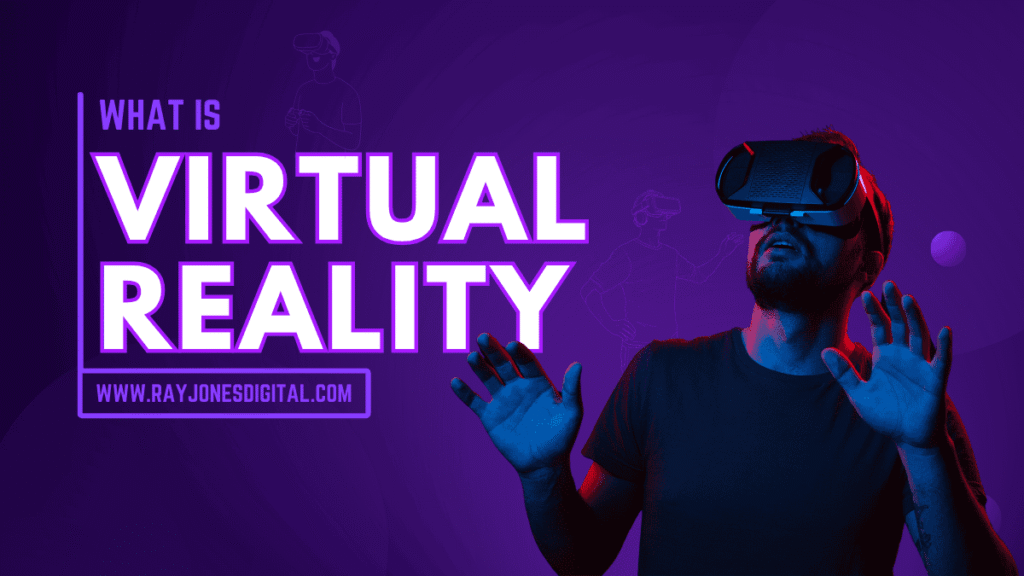
Virtual reality has moved beyond science fiction into our daily lives. From gaming headsets in living rooms to training simulations in boardrooms, VR technology is reshaping how we work, learn, and play. But what exactly is virtual reality, and why should you care about it?
This guide will walk you through everything you need to know about VR technology. You’ll discover how it works, explore its current applications, and learn about the exciting possibilities that lie ahead.
Understanding Virtual Reality Technology
Virtual reality is a computer-generated environment that simulates physical presence in real or imagined worlds. When you put on a VR headset, you’re transported into a three-dimensional space where you can look around, move, and interact with digital objects as if they were real.
The magic happens through a combination of hardware and software working together. VR headsets contain high-resolution displays, motion sensors, and audio systems that track your movements and adjust the virtual environment accordingly. This creates an immersive experience that tricks your brain into believing you’re somewhere else entirely.
Unlike traditional screens that show you a flat image, VR creates a 360-degree environment that responds to your head movements. Turn left, and the virtual world shifts with you. Look up, and you’ll see the digital sky above. This responsive interaction is what makes VR feel so remarkably real.
Essential VR Hardware Components
VR Headsets
The headset is the heart of any VR system. Modern VR headsets contain twin displays that show slightly different images to each eye, creating the illusion of depth and dimension. Popular options include the Meta Quest series, PlayStation VR, and HTC Vive.
Some headsets are standalone devices with built-in processors, whilst others require connection to a computer or gaming console. Standalone headsets offer convenience and portability, while tethered systems typically provide more processing power and better graphics quality.
Controllers and Tracking Systems
VR controllers allow you to interact with virtual environments using your hands. These devices track your hand movements and translate them into the digital world. Some systems use handheld controllers, while others employ hand tracking technology that monitors your finger movements without any physical device.
Room-scale tracking systems use external sensors or cameras to monitor your position within a designated play area. This technology enables you to walk around and physically move through virtual spaces, adding another layer of immersion to the experience.
Audio Systems
Spatial audio is crucial for creating believable virtual environments. VR headsets typically include built-in headphones or speakers that deliver 3D audio. This means sounds appear to come from specific directions and distances, just as they would in real life.
How VR Creates Immersive Experiences
Stereoscopic Vision
VR systems create depth perception by displaying slightly different images to each eye, mimicking how human vision works naturally. Your brain processes these two images and interprets them as a single three-dimensional view.
Motion Tracking
Advanced sensors monitor your head movements dozens of times per second. When you turn your head, the virtual environment updates instantly to maintain the illusion of presence. This low-latency tracking is essential for preventing motion sickness and maintaining immersion.
Haptic Feedback
Many VR systems include haptic feedback through controllers or specialised gloves. These devices provide physical sensations like vibrations or resistance, allowing you to “feel” virtual objects. This tactile element significantly enhances the sense of presence and interaction.
Current VR Applications
Gaming and Entertainment
Gaming remains the most popular consumer application for VR technology. VR games offer experiences impossible with traditional gaming, from wielding lightsabers in Star Wars adventures to exploring alien worlds in space exploration games.
VR cinema and 360-degree videos provide new forms of entertainment where you can experience concerts, documentaries, and films from unique perspectives. Some platforms even offer social viewing experiences where friends can watch content together in virtual spaces.
Education and Training
Educational institutions are embracing VR for immersive learning experiences. Students can walk through ancient Rome, explore the human circulatory system from inside blood vessels, or practice laboratory experiments in safe virtual environments.
Professional training programs use VR to prepare workers for high-risk situations without real-world dangers. Surgeons practice complex procedures, pilots train for emergency scenarios, and firefighters rehearse rescue operations in controlled virtual settings.
Healthcare Applications
Medical professionals use VR for patient treatment and therapy. Virtual reality exposure therapy helps patients overcome phobias and anxiety disorders by gradually exposing them to feared situations in controlled virtual environments.
Rehabilitation programs utilise VR to help patients recover from strokes, injuries, or surgeries. These programs make physical therapy more engaging and can provide precise tracking of patient progress.
Business and Professional Use
Companies use VR for remote collaboration, allowing team members to meet in virtual offices regardless of their physical locations. Architects and designers create virtual walkthroughs of buildings before construction begins, helping clients visualise finished projects.
Product development teams use VR to prototype and test designs in virtual environments, reducing the need for physical prototypes and speeding up the development process.
Types of VR Systems
Standalone VR Headsets
These self-contained devices include all necessary components built into the headset itself. They offer convenience and portability but may have limited processing power compared to tethered systems. Popular standalone options include the Meta Quest 2 and Pico 4.
PC-Powered VR Systems
These systems connect to powerful computers for enhanced graphics and processing capabilities. They typically offer better visual quality and more complex experiences but require a suitable gaming PC and physical connection cables.
Mobile VR Solutions
Mobile VR uses smartphones as displays and processors. While less powerful than dedicated systems, mobile VR provides an accessible entry point into virtual reality experiences. Examples include Google Cardboard and Samsung Gear VR.
Console-Based VR
Gaming consoles like PlayStation offer dedicated VR systems designed specifically for their platforms. These systems balance performance with accessibility, providing high-quality VR experiences through familiar gaming hardware.
Challenges and Limitations
Motion Sickness
Some users experience nausea or dizziness when using VR systems. This occurs when visual motion doesn’t match physical sensation, confusing the brain’s balance systems. Manufacturers continue developing techniques to reduce motion sickness through improved tracking and software optimisation.
Hardware Limitations
Current VR technology faces several hardware constraints. Battery life limits standalone headset usage, while processing requirements for high-quality graphics remain substantial. Display resolution, whilst improving, still falls short of human visual acuity.
Content Availability
The VR content library continues growing but remains limited compared to traditional media. Creating high-quality VR experiences requires specialised skills and significant development resources, which can slow content production.
Cost Considerations
Quality VR systems require significant investment in hardware and software. Entry-level systems may provide limited experiences, while high-end setups can cost thousands of pounds including necessary computer hardware.
The Future of Virtual Reality
Technological Advances
Emerging technologies promise to address current VR limitations. Improved processors will enable more realistic graphics, whilst advances in display technology will increase resolution and reduce screen-door effects.
Wireless technology improvements will eliminate cables whilst maintaining low latency connections. Battery technology advances will extend usage time for standalone devices.
Expanded Applications
VR applications will continue expanding beyond gaming and entertainment. Virtual tourism may allow people to explore distant locations without travel. Remote work could become more engaging through virtual offices and collaborative spaces.
Social VR platforms are developing into persistent virtual worlds where people can socialise, work, and create together. These metaverse concepts could fundamentally change how we interact with digital content and each other.
Integration with Other Technologies
VR will increasingly integrate with artificial intelligence, creating more responsive and intelligent virtual environments. AI-powered characters and systems will provide more natural interactions and personalised experiences.
Augmented reality convergence will create mixed reality experiences that blend virtual and physical worlds seamlessly. This hybrid approach may offer practical applications for daily life and work.
Getting Started with VR
Choosing Your First VR System
Consider your budget, available space, and intended use when selecting a VR system. Standalone headsets offer the easiest entry point, whilst PC-powered systems provide the most advanced experiences.
Research available content libraries to ensure your chosen system supports experiences that interest you. Gaming-focused users might prefer different systems than those interested in educational or professional applications.
Setting Up Your VR Space
Designate a safe play area free from obstacles and breakable objects. Most VR systems require at least 2×2 metres of clear space, though some experiences work in smaller areas.
Ensure adequate lighting for tracking systems whilst avoiding bright lights that might interfere with sensors. Consider comfort factors like ventilation and nearby seating for breaks between sessions.
Best Practices for VR Use
Start with shorter sessions to allow your body to adjust to VR experiences. Take regular breaks to prevent eye strain and motion sickness. Stay hydrated and ensure proper ventilation in your play area.
Begin with comfortable, stationary experiences before trying more intense or movement-heavy content. This gradual approach helps build your VR tolerance and confidence.
Embracing the Virtual Future
Virtual reality represents a fundamental shift in how we interact with digital content and each other. As technology continues improving and costs decrease, VR will become increasingly accessible and practical for everyday use.
The applications explored here represent just the beginning of VR’s potential. From revolutionising education and healthcare to creating new forms of entertainment and social interaction, virtual reality is poised to transform numerous aspects of our lives.
Whether you’re curious about trying VR for the first time or considering how it might benefit your work or education, now is an excellent time to explore this exciting technology. Start by trying VR experiences at local electronics stores or gaming centres to discover what appeals to you most.
As VR technology matures and becomes more mainstream, early adopters will be best positioned to take advantage of new opportunities and applications. The virtual future is arriving quickly—and it’s more accessible than ever before.

I am Ray Jones Digital
My current occupations: a Digital Marketer, Local SEO expert, Link Builder, and WordPress SEO specialist. Shopify SEO, Ecommerce Store Management, and HTML & WordPress Developer I have been practicing the above mentioned services for more than 10 years now As an SEO expert working with your ongoing projects.
